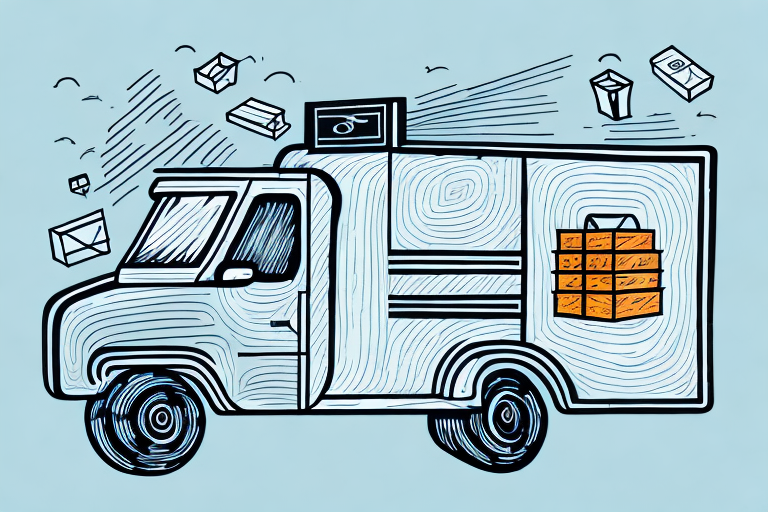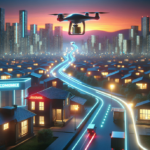Optimizing Final Mile Deliveries for Maximum Efficiency
Final mile deliveries are a crucial component of today's logistics industry, representing the last leg of delivery from a warehouse or distribution center to the customer's doorstep. This segment requires the coordination of several intricate processes, and its success is paramount to both the customer experience and the logistics operators. Delays or errors in final mile deliveries can lead to poor customer satisfaction, lost business, and increased operational costs. Therefore, optimizing final mile deliveries is essential for achieving maximum efficiency in logistics and transportation management. In this article, we will explore various aspects of final mile deliveries, from understanding their importance to examining trends, innovations, and best practices for ensuring their optimization.
Understanding Final Mile Deliveries and Their Importance
Final mile deliveries refer to the last segment of the transportation process, stretching from the distribution center to the individual customer's doorstep. This phase is the most expensive, complicated, and time-consuming part of the entire supply chain, often accounting for up to 53% of total shipping costs (Forbes). Efficient management of final mile deliveries is critical for ensuring customer satisfaction, loyalty, and retention. It is the most visible aspect of the logistics process, where any mistake or deviation from customer expectations can significantly impact the logistics provider's brand.
One of the biggest challenges in final mile deliveries is the unpredictability of the delivery environment. Factors such as traffic congestion, weather conditions, and unexpected road closures can significantly impact delivery times and cause delays. To overcome these challenges, logistics providers are increasingly turning to technology solutions such as route optimization software, real-time tracking, and predictive analytics to improve delivery efficiency and accuracy.
Another important aspect of final mile deliveries is the need for personalized customer experiences. Customers today expect a high level of convenience and flexibility when receiving their orders, including options like same-day or next-day delivery, delivery to alternative locations, and the ability to track their orders in real-time. Logistics providers must invest in technology and processes that enable them to offer these personalized experiences while maintaining cost-effectiveness and operational efficiency.
Common Challenges Faced in Final Mile Deliveries
Final mile deliveries present a range of challenges, including traffic congestion, parking shortages, inaccessible delivery locations, and adverse weather conditions such as heavy rains, snow, or hurricanes. Additionally, the constantly changing consumer behavior adds complexity, as customers now demand flexible delivery options like same-day or next-day delivery and prefer various order fulfillment channels.
Efficient and accurate tracking and communication are also significant challenges. With the rise of e-commerce, customers expect real-time updates on their delivery status and location, requiring effective communication between delivery drivers, dispatchers, and customers. Accurate tracking is essential for ensuring on-time deliveries and preventing lost or stolen packages. Without proper tracking and communication, final mile deliveries can become a frustrating experience for both customers and delivery providers.
Benefits of Optimizing Final Mile Deliveries
Optimizing final mile deliveries offers numerous benefits beyond ensuring customer satisfaction. These benefits include reducing delivery or shipment costs, increasing capacity utilization, improving delivery speed and accuracy, reducing greenhouse gas emissions, and lowering the environmental impact of logistics operations (McKinsey). Additionally, optimization can enhance operational efficiency and drive revenue growth, making it a critical component of modern logistics and transportation management strategies.
Another key benefit is the reduction of failed deliveries or missed appointments. By utilizing advanced routing and scheduling algorithms, logistics companies can ensure that the right package is delivered to the right customer at the right time, thereby minimizing the number of missed deliveries. This not only saves costs for the logistics company but also enhances the customer experience by reducing the need for returns due to incorrect or failed deliveries.
Strategies for Efficient Final Mile Delivery Management
To optimize final mile deliveries, logistics providers should adopt several efficient delivery management strategies:
- Route Optimization: Utilizing software to determine the most efficient delivery routes can reduce delivery times and fuel consumption.
- Real-Time Tracking and Communication: Implementing systems that allow for real-time tracking of deliveries and communication between drivers and customers enhances transparency and reliability.
- Delivery Appointment Scheduling: Offering customers the ability to schedule delivery times can improve convenience and reduce missed deliveries.
- Consolidated Shipments: Grouping multiple deliveries in a single trip can increase efficiency and reduce costs.
- Eco-Friendly Transportation: Utilizing electric vehicles, bicycles, or drones can lower environmental impact and appeal to eco-conscious consumers.
- Machine Learning and Data Analytics: Leveraging these technologies can help predict demand, optimize inventory management, and improve delivery visibility.
Prioritizing customer satisfaction by offering flexible delivery options and providing clear, accurate delivery updates is also essential. This can be achieved through automated notifications and personalized delivery preferences, enhancing the overall customer experience while maintaining operational efficiency.
Automation and Technology in Final Mile Deliveries
The integration of automation and technology has revolutionized final mile deliveries. Intelligent robots, autonomous vehicles, drones, and advanced last-mile delivery management software have made deliveries faster, more cost-effective, and more reliable. For example, drones can deliver packages more quickly than traditional methods, while autonomous vehicles can optimize delivery routes and reduce the number of delivery trucks needed.
Last-mile delivery management software enables real-time tracking and management of deliveries, optimizing routes and providing customers with up-to-date delivery status information. Additionally, technology has enhanced the safety and security of packages. Sensors and GPS tracking allow companies to monitor the location and condition of packages in real-time, ensuring they are delivered to the correct destination and in good condition. Biometric authentication technologies are being used to ensure that packages are delivered only to the intended recipients, reducing the risk of theft or misdelivery.
Role of Data Analytics in Optimizing Final Mile Deliveries
Data analytics plays a pivotal role in optimizing final mile deliveries. By analyzing data from historical delivery patterns, weather forecasts, traffic trends, and more, logistics providers can identify inefficiencies, optimize delivery routes, predict demand, and enhance customer satisfaction. Machine learning algorithms can forecast high-volume delivery periods, optimize inventory levels, and improve delivery speed and accuracy.
One of the key benefits of data analytics is the ability to track and monitor delivery performance in real-time. This allows logistics providers to quickly identify and address issues such as delays or missed deliveries. Access to real-time data enables informed decision-making regarding resource allocation and process improvements.
Furthermore, data analytics can help logistics providers reduce operational costs by analyzing data on fuel consumption, vehicle maintenance, and other expenses. Identifying areas where costs can be cut without compromising service quality allows companies to remain competitive and improve their bottom line.
Best Practices for Streamlining Final Mile Deliveries
Streamlining final mile deliveries involves adopting a set of best practices to enhance efficiency and effectiveness:
- Partnering with Local Couriers: Collaborating with local delivery services can enhance delivery speed and flexibility.
- Using Low-Emission Vehicles and Eco-Friendly Packaging: Adopting green logistics practices reduces environmental impact and appeals to eco-conscious consumers.
- Offering Flexible Delivery Options: Providing customers with choices such as same-day delivery or delivery to alternative locations enhances convenience.
- Leveraging Customer Data for Personalized Deliveries: Utilizing customer preferences and behavior data can tailor delivery strategies to individual needs.
- Providing Real-Time Delivery Updates: Keeping customers informed through real-time notifications improves transparency and satisfaction.
- Establishing Efficient Reverse Logistics Processes: Streamlining returns processes enhances customer experience and reduces costs.
- Optimizing Delivery Routes with GPS Technology and Analytics: Advanced routing technologies ensure the most efficient paths are taken, saving time and resources.
Ensuring delivery personnel are well-trained and equipped with the necessary tools and technology is also paramount. Providing handheld devices for real-time tracking and communication, as well as training on safe and efficient package handling, can significantly improve delivery operations.
Establishing strong partnerships with suppliers and vendors ensures a seamless and efficient delivery process. Coordinating delivery schedules and optimizing packaging and labeling processes in collaboration with suppliers can lead to faster and more accurate deliveries.
Key Performance Indicators (KPIs) for Measuring Final Mile Delivery Efficiency
Measuring the efficiency of final mile deliveries is essential to assess the success of optimization strategies. Key performance indicators (KPIs) include:
- On-Time Delivery Success Rate: Measures the percentage of deliveries made on schedule.
- Average Delivery Time: Tracks the average time taken to complete deliveries.
- Error Rate: Monitors the frequency of delivery errors, such as wrong addresses or incorrect packages.
- Customer Satisfaction Rate: Gauges customer happiness with the delivery process.
- Delivery Costs per Shipment: Calculates the average cost associated with each delivery.
- Greenhouse Gas Emissions per Delivery: Measures the environmental impact of delivery operations.
By continuously monitoring and analyzing these KPIs, logistics operators can identify inefficiencies, refine their final mile delivery strategies, and improve overall operational efficiency.
Case Studies on Efficient Final Mile Delivery Management
Numerous case studies demonstrate how different logistics providers have successfully optimized final mile deliveries:
- Amazon's Drone Deliveries: Amazon has been at the forefront of utilizing drones to expedite deliveries, reducing delivery times and operational costs (Forbes).
- UPS's Use of Bicycles and Drones: UPS has implemented the use of electric bicycles and drones for last-mile deliveries in urban areas, enhancing delivery speed and reducing emissions.
- DHL's Autonomous Robots: DHL has deployed autonomous robots for last-mile deliveries in urban environments, which navigate sidewalks and crowded areas to deliver packages efficiently.
These case studies highlight the varied approaches and technologies that can be leveraged to optimize final mile deliveries, providing valuable insights into the effectiveness of different logistics strategies.
Future Trends and Innovations in Final Mile Delivery Optimization
The future of final mile deliveries is poised to be shaped by further advancements in automation and technology. Predictions include the mainstream adoption of drone deliveries, electronic lockers, and self-driving delivery trucks. The rise of smart cities and alternative transportation modes, such as electric bicycles and scooters, will also influence the evolution of final mile deliveries.
Emerging technologies like blockchain for secure transactions, augmented reality for enhanced delivery tracking, and artificial intelligence for predictive analytics are expected to play significant roles in shaping future delivery models. Logistics providers must remain agile and adaptable to these trends to ensure their final mile delivery strategies remain efficient and competitive in the years to come.
Importance of Customer Satisfaction in Final Mile Deliveries
Customer satisfaction is a top priority in final mile deliveries, as successful deliveries lead to higher customer loyalty and generate positive word-of-mouth marketing. Logistics providers must focus on delivering excellent customer service and tailoring their delivery strategies to meet individual customer preferences. Personalized services such as flexible delivery options, quick and easy returns, and real-time delivery updates are crucial for ensuring customer satisfaction and retention in the final mile delivery stage.
Implementing feedback mechanisms to gather customer opinions and continuously improve delivery processes can further enhance satisfaction levels. Satisfied customers are more likely to become repeat buyers and recommend the service to others, driving business growth.
Sustainability and Environment-Friendly Approaches to Final Mile Deliveries
Sustainability and environmentally friendly approaches to final mile deliveries have become increasingly essential for logistics providers. As consumers grow more eco-conscious, companies are adopting green logistics practices to meet these demands. Strategies include using low-emission delivery vehicles, eco-friendly packaging, and green transportation modes such as bicycles and electric vehicles (Supply Chain Dive).
By implementing sustainable practices, logistics providers can reduce their carbon footprint, lower operational costs through energy-efficient technologies, and contribute to a greener future. Additionally, promoting sustainability can enhance a company's brand image and appeal to environmentally conscious consumers.
In conclusion, optimizing final mile deliveries for maximum efficiency is crucial for logistics providers to ensure customer satisfaction, reduce operational costs, and improve overall supply chain performance. With ongoing technological advancements and evolving consumer expectations, logistics providers must remain agile and adopt effective strategies to maintain a competitive edge in the dynamic landscape of final mile delivery.




















